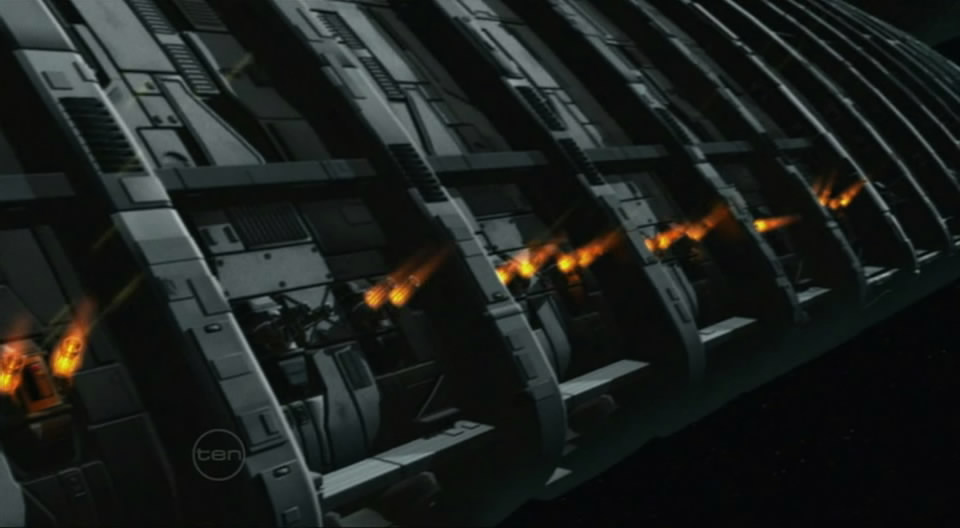So, I gather more’n a few laser fans are coming to visit these days, so just to save time, here’s the canonical reason that lasers are the ‘verse’s secondary weapons system, not its primary one:
(It turns out that this is really a recapitulation of points raised in Non-Standard Starship Scuffles, so if you’re already nodding along to that, you can more or less skip the rest. I’ll just hit a few high points.)
Lasers, for the most part, are useful weapons systems under many circumstances. (Obviously they have to be, given their use as point-defense; if you couldn’t get effective results from lasing a k-rod, they wouldn’t be used.) As mentioned elsewhere, you can get an effective result out of a laser weapon, due to collimation, up to around a light-second, which is the entirety of the inner engagement envelope, and as such every military starship mounts a passel of phased-array plasma lasers for point-defense, and larger classes cram in some broadside offensive lasers too.
You can actually collimate reasonably effective beams at rather longer distances than that, as the existence of starwisp tenders demonstrates – although they themselves are of little use for military purposes despite the incidents mentioned in that article, seeing as they shift angular vector and alter their focus with all the grace and speed of apatosauruses mating. One would, however, make a dandy generator for a laser web.
(Yes, they exist in the ‘verse, and have done ever since the Admiralty paid the Spaceflight Initiative to launch Sky-Shield, the homeworld’s first orbital defense grid, back in the day. Orbital defense grids remain their main military use, along with civilian beamed power.)
It’s just that the IN sees no particular point in paying in either cashy money or mass/volume budget for collimation to make them effective beyond the inner engagement envelope, because you aren’t going to hit any actively evading targets at that range anyway, golden BBs and spies having gotten you a copy of their drunkwalk algorithms aside, and kinetics/AKVs work better for the geometry games played in the outer envelope.
Here, though, is the spoiler in the deck where military lasers are concerned:
Thermal Superconductors.
(The laws of physics do permit them, I am assured, and local materials science is more than up to producing them.)
In up-to-date designs, starship armor is woven through with a dense mesh of the stuff, with wicking into big heat-sink tanks of thermal goo. This causes something of a problem for weaponized lasers, because it makes it ridiculously hard to create a hot spot that’ll vaporize – instead, you just add heat to the whole starship. Which is not useless by any means, if you can manage lots of repeated hits or keep a beam on target, because if you can pump enough heat into a starship, either it, the crew, or both, will go into thermal shutdown; but this is what lasers are for in ‘verse starship combat. If you want to blast things apart, you go for kinetics, because you can’t tank (sic) big lumps of baryons.
Of course, this defense has its limitations: a laser grid at short range can hit its target with enough power to overcome the armor and, indeed, to chop its target neatly into a pile of small cubes. But that’s for definitions of short range meaning “inside knife-fight range”, and any Flight Commander who let the range close that much without having his entire propulsion bus shot off first would be summarily cashiered for incompetence.
And that’s why lasers aren’t the primary or only weapons system around these parts.

